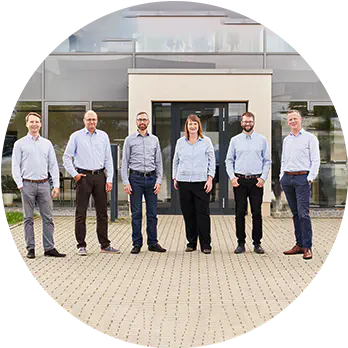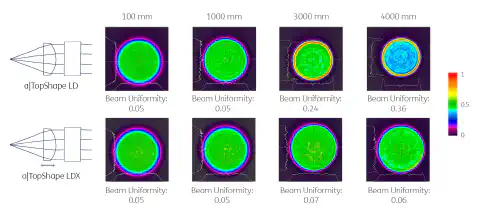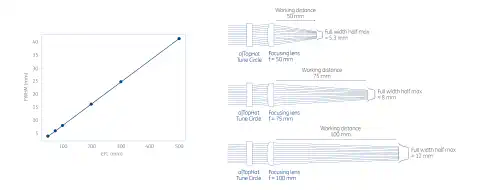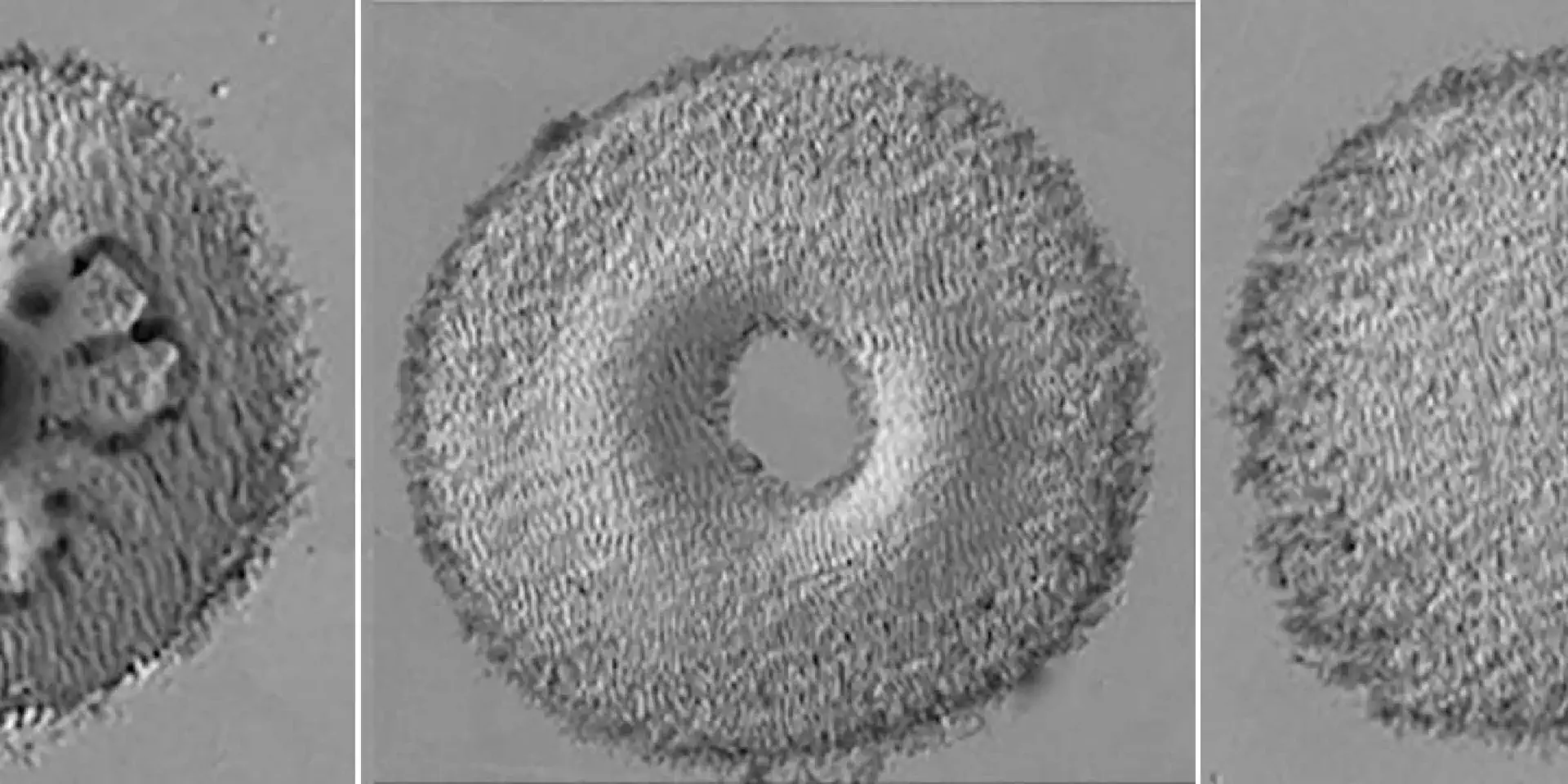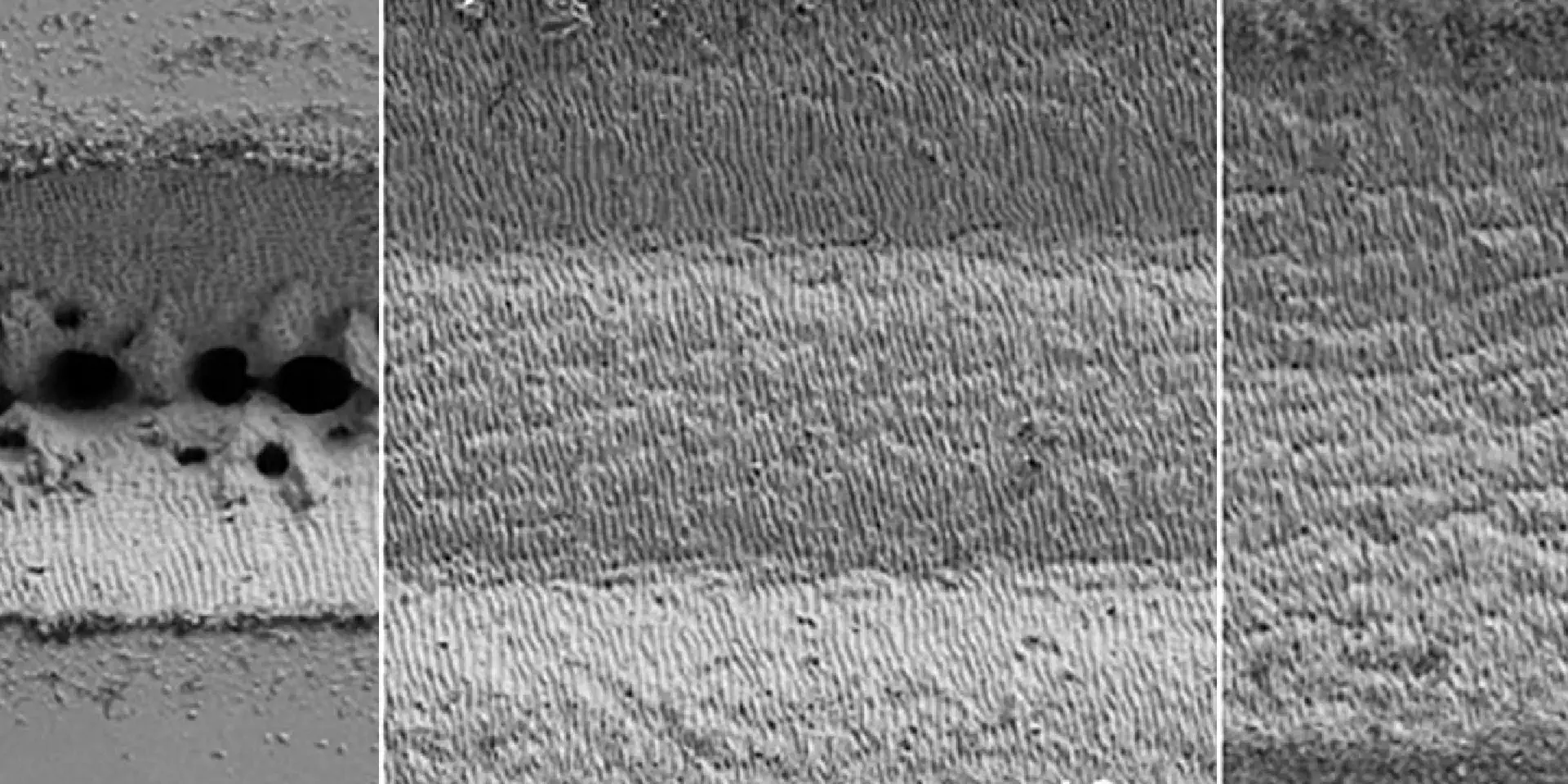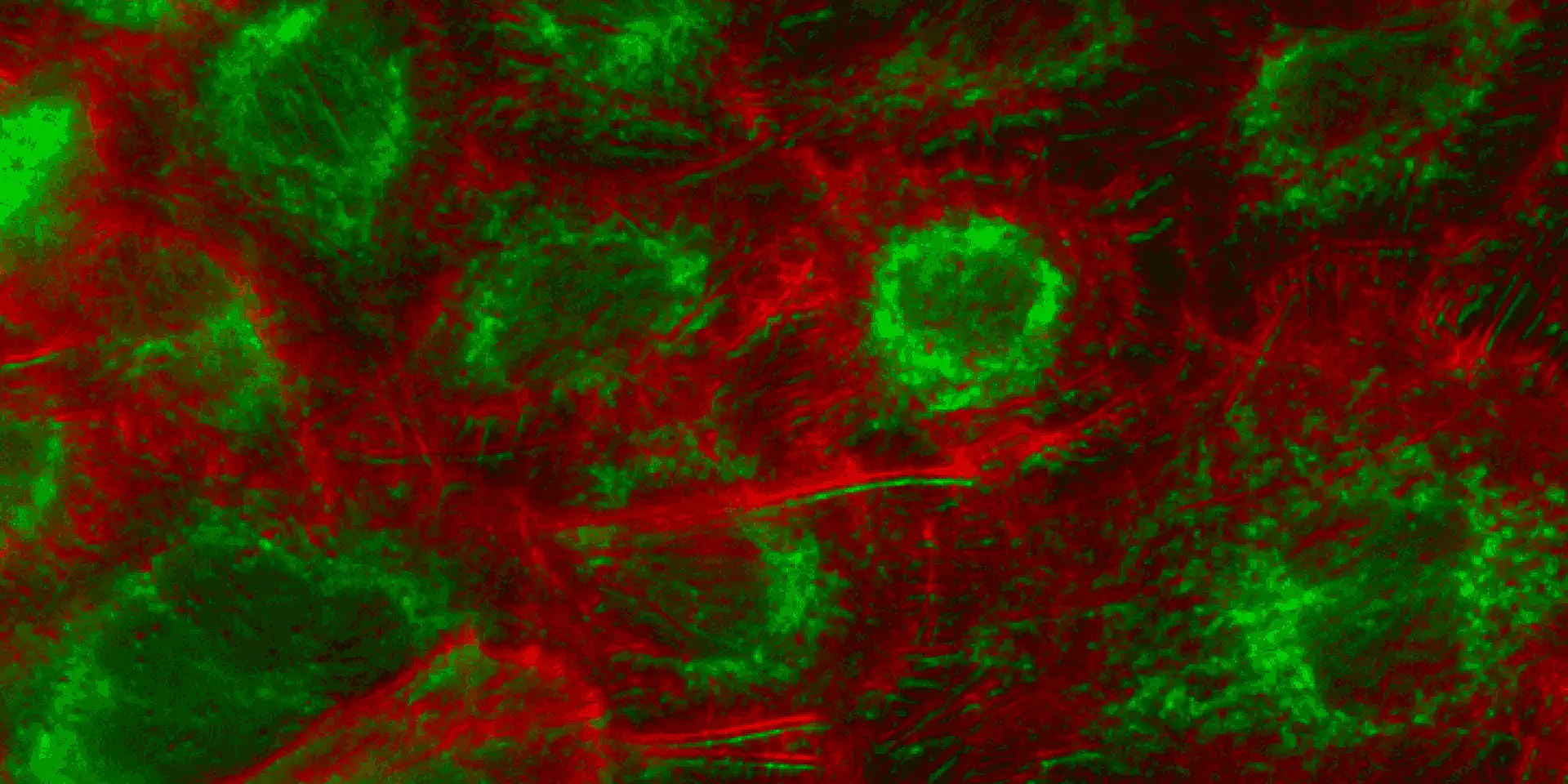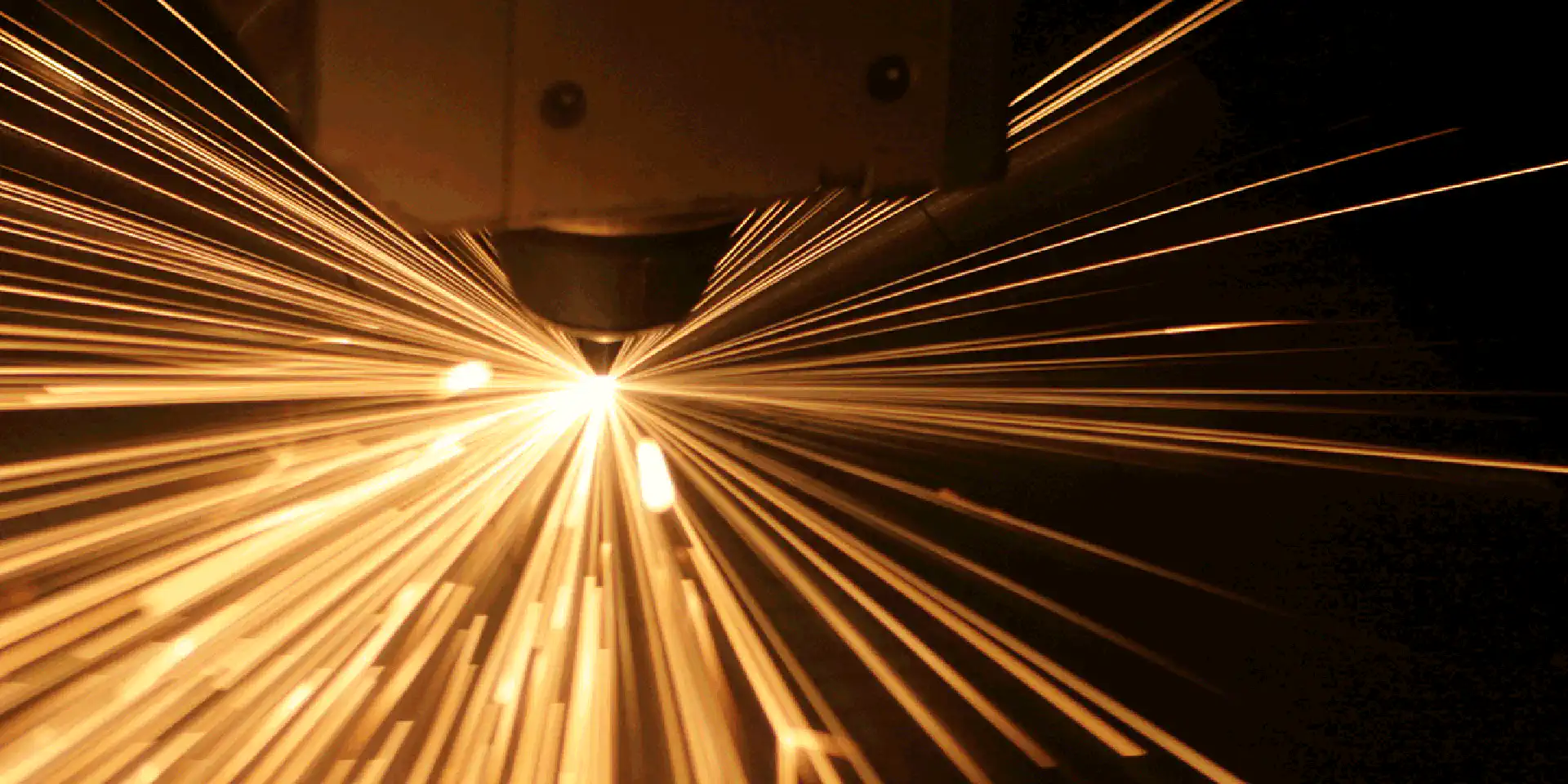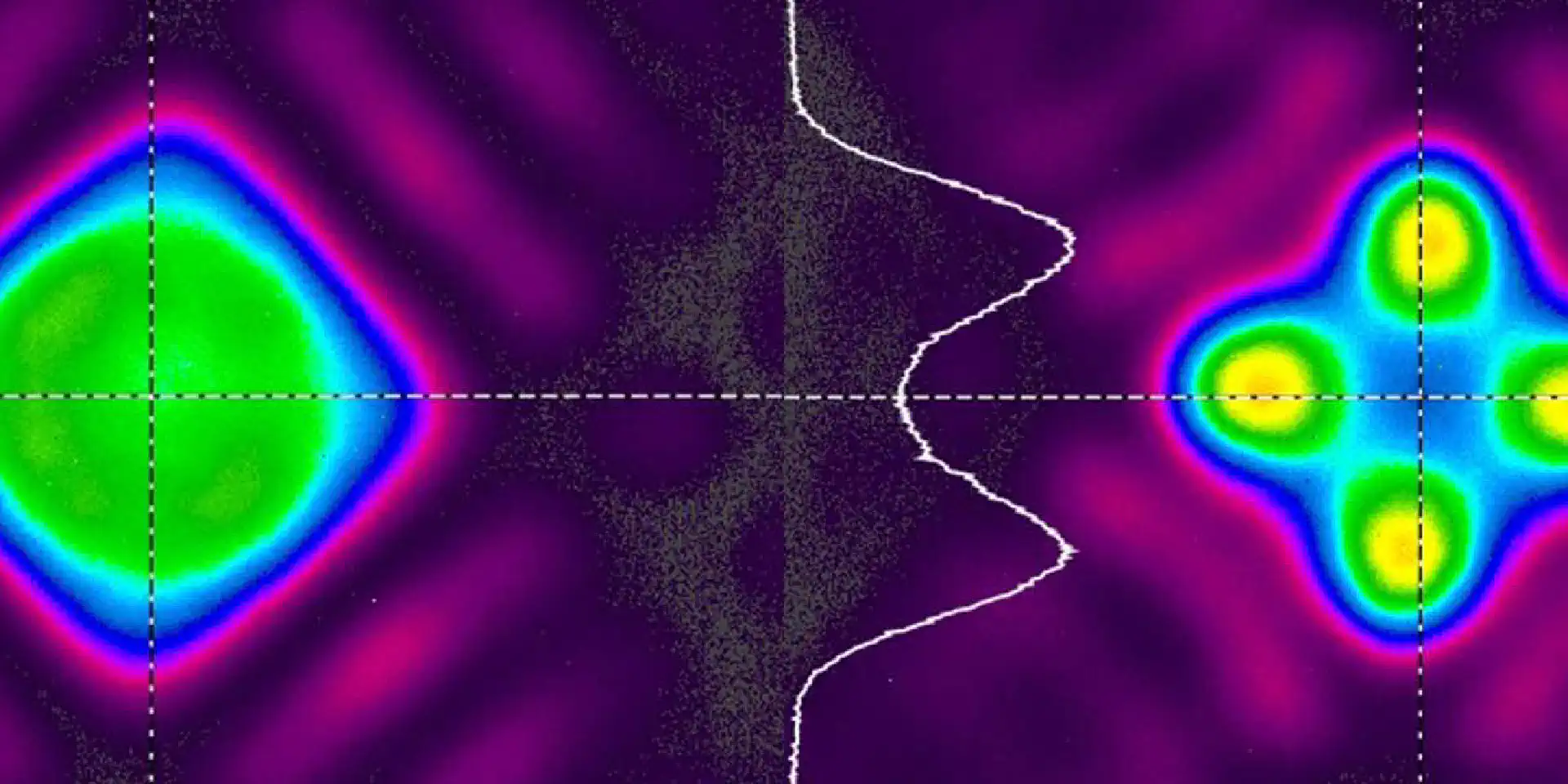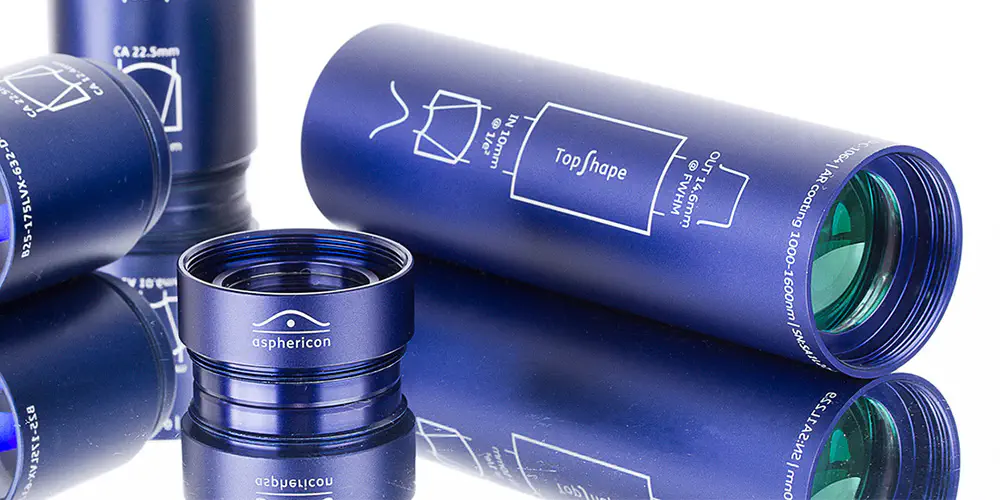
Beam Shaping
Discover easy Gauss to Top-Hat transformation.
Aspheric laser beam shaper
With the a|TopShape, a|AiryShape, and a|SqAiryShape from the laser beam shaping range, asphericon offers efficient top hat beam shapers for maximum results in all laser applications. Based on aspherical optics, these modular components allow the straightforward transformation of Gaussian laser beams into various round and square top hat profiles. Thanks to highly precise manufacturing technology, these laser beam shapers are distinguished by unparalleled beam quality and can be used in diverse applications.
New: Discover the latest product in asphericon’s beam shaper series - the a|TopHat Tune Circle for shaping round Top-Hat profiles with beam diameters from 1 to 10 mm.
Laser beam shaper for collimated Top-Hat profiles
a|TopShape
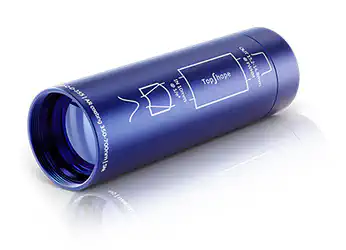
The a|TopShape is an innovative beam shaper that transforms collimated Gaussian beams into slightly enlarged (M ≈ 1.5) collimated top hat beams with uniform intensity distribution. It’s distinguished by its compact design and outstanding optical quality (beam uniformity < 0.1). The laser beam shaper covers a wide spectral range (320–1,600 nm), accepts different input beam diameters up to ±10%, and generates a stable beam profile for at least 300 mm.
Using the LongDistance version (a|TopShape LD), even homogeneous beam profiles can be achieved at a working distance of up to 1.5 m. With the new a|TopShape LDX, the beam profile can be shifted to large working distances of up to 3 m by adjusting the input beam diameter. Since the effective working distance decreases as the beam size is reduced, a|TopShape LD and LDX are particularly suitable for applications requiring smaller beam diameters. For applications where the beam profile’s homogeneity is less crucial, longer working distances are also possible (see Flexibility).
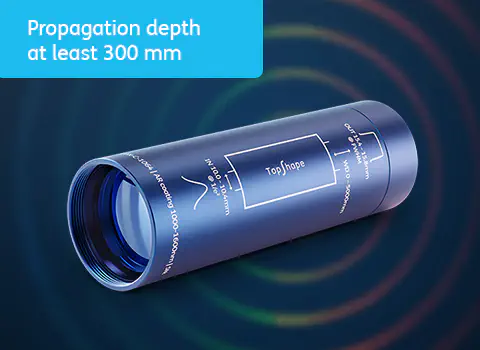 a|TopShape
a|TopShape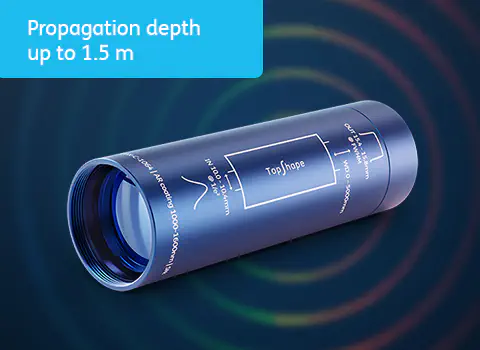 a|TopShape LD
a|TopShape LD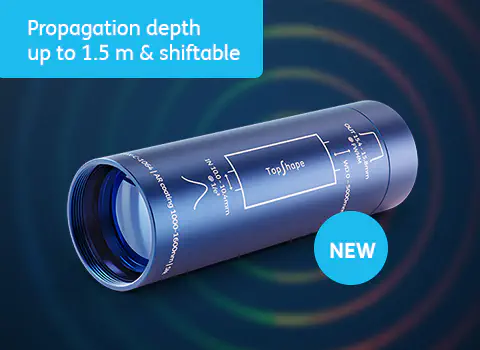 a|TopShape LDX
a|TopShape LDXSpecifications
- Generation of collimated top hat profiles
- Outstanding optical quality (beam uniformity up to 0.05) without drop in performance
- Wide spectral range (320–1,600 nm) and suitable for multi-wavelength applications
- Propagation depth (with beam uniformity < 0.1):
- a|TopShape: At least 300 mm
- a|TopShape: LD up to 1.5 m
- a|TopShape LDX: At least 1.5 m – can be shifted to longer working distances of at least 3 m
- Input beam diameter:
- @ 1/e2 = 10 mm (± 10%) for a|TopShape and a|TopShape LD
- @ 1/e2 = 10,0 - 10,4 mm for a|TopShape LDX
- Output beam diameter@ FWHM = between 15.2 mm and 15.7 mm
- Easy to combine with other BeamTuning components (e.g. with fiber collimator a|AspheriColl)
- Laser induced damage threshold: 12 J/cm², 100 Hz, 6 ns, 532 nm, 532 nm
For applications with higher laser power, we invite you to explore our V-coating options. Contact us for a personalized solution tailored to your needs.
Technical dimensions [mm]
Flexibility
The key feature of the TopShape LD and LDX is their long, stable propagation distance. The following figure shows the intensity distribution at working distances of 100 mm, 1000 mm, 3000 mm, and 4000 mm. They’re both characterized by beam uniformity of 0.05 up to 1,500 mm. By varying the input beam diameter, beam uniformity of 0.06 up to as much as 3,200 mm can be guaranteed for the TopShape LDX.
Due to its flexible output diameter, the a|VariColl is the ideal collimator for shifting the working range of the a|TopShape LDX. For more information, see Fiber Collimation & Fiber Coupling..
Wavelength range
Covered wavelength range of the laser beamformer a|TopShape for design wavelengths of [nm] 355, 632, and 1064 and a|TopShape LD and LDX for design wavelengths of [nm] 355, 405, 532, 632, 780, and 1064.
Advantages of Top-Hat intensity distributions
Beam shaping has an important role to play, e.g. in applications in laser material processing or microscopy (e.g.Fluorescence Microscopy). Gaussian profiles are usually used in laser applications. They have weaknesses regarding the distribution of their intensity. With homogeneous intensity distributions, so-called Top-Hats, significantly better results can be achieved than with Gaussian profiles. They enable, for example, a high edge steepness of the laser beam and thus the quality of the cutting edge or an even illumination. Benefit from easy handling for your application! Convert Gaussian laser profiles into collimated or focused Top-Hat intensity distributions with asphericon’s beam shapers.
Laser beam shapers for focused beam profiles
a|AiryShape & a|SqAiryShape
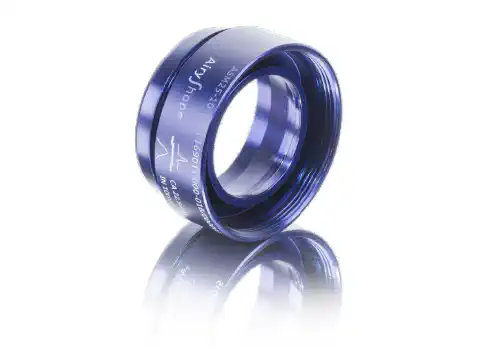
Another beam shaper optimized for wavelengths from 300 nm up to 1600 nm is the a|AiryShape. This beam shaping element enables in combination with a focusing lens the transformation of collimated Gaussian beams into different focused beam profiles (e.g. Top-Hat, Donut). Thanks to its compact design, the a|AiryShape can be easily integrated into existing set-ups.
Want to create squared Top-Hat profiles in the focus? No problem with the a|SqAiryShape. This beam shaper generates in combination with a focusing lens different squared focused beam profiles (e.g. Top-Hat, Donut) from collimated Gaussian beams. Optimized for the wavelength range from 300 nm to 1600 nm, it also impresses with its compact design (only 17.3 mm in length) and can be easily incorporated into existing application set-ups. Its working distance can be extremely reduced depending on the focusing lens used. Integrating an a|SqAiryShape together with a lens of 200 mm focal length and an a|BeamExpander already reduces the total length by 25%.
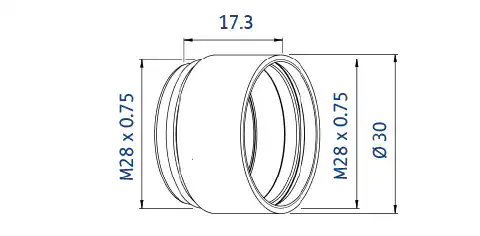
Specifications & Technical dimensions [mm]
- Generation of different focused beam profiles
- Profile size easily scalable by focal length
- Optimized for wavelengths from 300 nm to 1600 nm
- Easy integration into existing set-ups
- Perfect alignment by high-precision mounting
- Compact design
- Input beam diameter @ 1/e2 = 10 mm; output beam diameter dAiry = 10 mm
- Laser induced damage threshold: 12 J/cm2, 100 Hz, 6 ns, 532 nm
Performance & Flexibility
In the figure below normalized beam profile sections along its propagation direction (z-axis) are summarized in one diagram. The detected range is ± 1.5 mm around the waist location. Furthermore, the corresponding most interesting intensity profiles in the different working planes are shown as 2D and cross-sectional plots. Both plots of the characteristic beam profiles are generated with the a|AiryShape (λ = 635 nm). According to the working principle of the a|AiryShape, it is possible, not just to generate one Top-Hat beam profile in the focal plane of a focusing lens but also to create various profiles in different working distances for your flexibility. The generation of the shown beam profiles depends on the input beam quality. For optimum results a perfect collimated beam with minimized wavefront aberrations is required.
The figure on the right shows beam profile cross sections of the a|SqAiryShape (λ = 1064 nm), as well as its intensity profiles in the different working planes. The detected range is ± 6 mm around the beam waist. Due to the working principle of the a|SqAiryShape, not only one squared Top-Hat profile is generated in the focal region, but a variety of profiles with four-fold symmetry. Using the a|SqAiryShape, the generation of the beam profiles also depends on the quality of the input beam. For optimum results, a perfect collimated beam with minimized wavefront aberrations is required.
Wavelength range
Based on the BeamTuning elements the AiryShape covers a wide wavelength range for your challenging application.
Beam shaper for scalable Top-Hat beam profiles
a|TopHat Tune
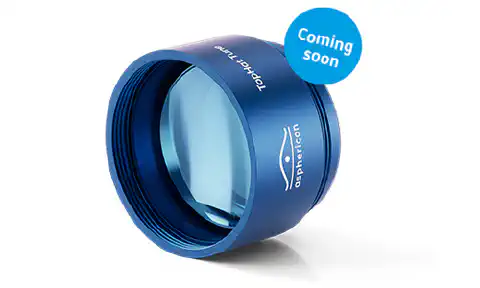
The a|TopHat Tune is designed to generate various round, elliptical, square and rectangular TopHat profiles with beam diameters from 0.5 mm to large diameters, making it an essential tool for material processing and other demanding applications. This device seamlessly integrates with focusing lenses of various focal lengths, offering exceptional flexibility in adjusting the working distance and profile diameter. By simply changing the focusing lens, users can easily modify the beam diameter while maintaining a uniform beam profile, showcasing the versatility of the beam shaper. Optimized for wavelengths ranging from 266 to 2100 nm, the a|TopHat Tune guarantees perfect alignment through its high-precision mounting system. The laser beam shaper also excels in beam uniformity. As demonstrated in a simulated intensity distribution in the following, the system produces a perfectly uniform intensity profile. Additionally, with an outer diameter of 30 mm, it fits effortlessly into any standard holder, such as the a|VariMount, making it ready to use right out of the box with just the connection to a focusing lens.
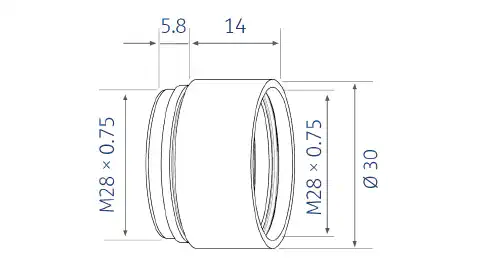
Specifications & Technical dimensions [mm]
- Available for various round, elliptical, square & rectangular Top-Hat profile shapes
- Optimized for wavelengths from 266 nm to 2100 nm
- Available in design wavelengths 355 nm, 532 nm, 632 nm, 780 nm, 1064 nm, 1550 nm and 2000 nm (best performance at design wavelength, also suitable for wider wavelength range due to broadband coating; Please note: diameter varies with wavelength)
- Input beam diameter 10 mm @1/e2
- Profile size easily scalable by focal length
- Design distance between beam shaper and focusing lens: 17 mm (ideal for combination with a|MountedAspheres from asphericon) or 250 mm
- Laser induced damage threshold: 12 J/cm², 100 Hz, 6 ns, 532 nm
For higher laser power applications please request a V-Coating. Contact us for an individual offer.
Flexibility
The a|TopHat Tune offers exceptional flexibility in generating Top-Hats. As illustrated below, it can be used with focusing lenses of various focal lengths allowing for easy adjustments to the working distance and profile diameter by simply changing the lens. This makes the a|TopHat Tune a versatile tool for applications requiring varying beam diameters while maintaining uniformity in the beam profile.
The diagram on the left shows how the Top-Hat diameter changes as a function of the EFL, using the a|Top Hat Tune Circle Large as an example.
For optimal performance, combining the a|TopHat Tune with mounted aspheres from asphericon is highly recommended. These lenses are pre-aligned with precision, thanks to their advanced mounting concept, ensuring quick and easy integration. Simply screw the aspheric lens into place, and you’re ready to achieve high-precision TopHat profiles with minimal setup time. This seamless compatibility further enhances the a|TopHat Tunes convenience and reliability, making it a top choice for demanding optical applications.
The table below shows all available a|TopHat Tune variants depending on the desired profile shape and size.
| Type | Input beam diameter | FWHM | Working distance | Distance to focusing element |
|---|---|---|---|---|
| Circle Small | 5 mm | 1 mm* | 200 mm* | 250 mm |
| Circle Large | 10 mm | 8 mm** | 75 mm* | 17 mm |
| Square Small | 5 mm | 1 mm* | 200 mm* | 250 mm |
| Square Large | 10 mm | 8 mm** | 75 mm* | 17 mm |
| Rectangle low-AR | 5 mm | 0.5 x 1.5 mm* | 200 mm* | 250 mm |
| Rectangle high-AR | Available on request/as customized solution | |||
| Ellipse | Available on request/as customized solution |
Performance
The high performance of a|TopHat Tune is particularly evident regarding its beam uniformity. Depicted are the simulated intensity distributions of an a|TopHat Tune Circle, Square and Rectangle at 780 nm used with a focusing lens with a focal length of 75 mm. They are characterized by a perfectly uniform intensity distribution.
Reference projects
Your request
